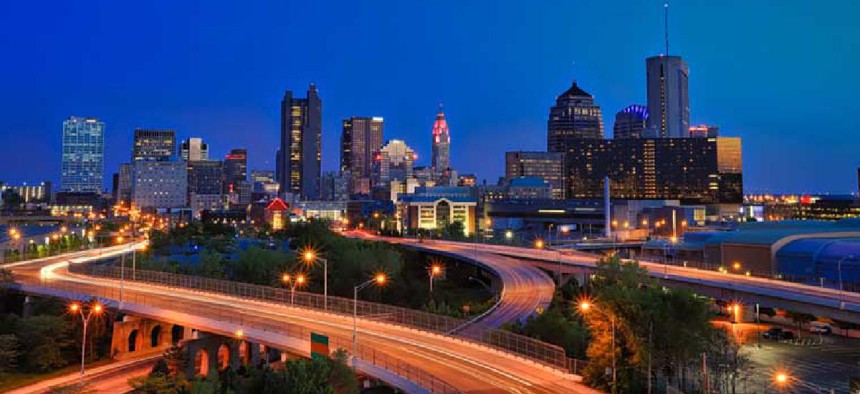Columbus rolls out connected vehicle plan


Connecting state and local government leaders
Two years after winning the Department of Transportation's $40 million Smart City Challenge, Columbus, Ohio, details its connected vehicle infrastructure.
Two years after winning the Department of Transportation's $40 million Smart City Challenge, Columbus, Ohio, has released a detail-rich document outlining the connected vehicle infrastructure it plans to build over the course of the next two years as part of its Smart Columbus program.
The Connected Vehicle Environment concept-of-operations document describes the current transportation system, what Columbus users need from urban mobility, how the proposed system will address those needs and the potential operational characteristics of the system.
The document will act as a “playbook” for the city, said Smart Columbus Program Manager Mandy Bishop. The next step will be outlining system requirements, which will help officials with drafting requests for proposals, she added.
The Connected Vehicle Environment is expected to deliver situational awareness for traffic management and operations based on data from connected vehicle equipment installed in vehicles and on a select group of roadways and intersections where the technology can reduce the number of accidents and support truck platooning, which involves electronically linking groups of trucks to drive close to one another and accelerate or brake simultaneously.
The city will install 113 roadside units that will contain some or all of the following: a traffic signal controller, a Global Navigation Satellite System (GNSS) receiver to pinpoint locations, a wireless dedicated short-range communications (DSRC) radio and a message processing unit.
Meanwhile, 1,800 onboard units will be installed in city fleet vehicles and volunteer citizen vehicles that will communicate with the roadside units and one another. The units will contain a GNSS receiver, a vehicle data bus, a DSRC radio, a processing unit, a power management system, software applications and a display. Data on the vehicle’s acceleration and angular rotation will be collected by the car's sensors or the vehicle data bus, while the GNSS will collect data on the vehicle’s position, speed and heading. Cars and infrastructure will communicate via DSRC radio.
Data from roadside units will be transmitted over an existing high-speed fiber network called the Columbus Traffic Signal System to the Smart Columbus Operating System, where it will be used for real-time decision-making and long-term planning. The operating system is a secure data management platform built to securely "consume, transform, store and publish … status information, event messages, raw or filtered traffic situation data (safety and priority request messages) from equipment on the roadside,” the plan states.
The data will inform the dozen applications the city plans to put in place, including emergency brake light warnings that allow cars to warn surrounding vehicles when they’re slowing down, traffic signal priority and preemption for emergency services and city transit, traffic management, and warnings to notify drivers when a traffic light is about to turn red.
The city plans to release multiple RFPs for hardware and software early next year and start installing equipment in the cars of volunteers and on roadsides by next summer. Full testing is expected to begin by July 2020.
Although several manufacturers already include DSRC technology in their vehicles, officials have not determined whether those cars will be able to participate in the early testing in Columbus.
“Each equipment manufacturer has committed to interoperability, but the technology is so new that I cannot say for certain” if cars with built-in DSRC will be able to work with the planned system, Bishop said.

NEXT STORY: How Sustainable Is Your City?




